One guitarist I played with was adamant that mute switches and volume pedals were for the unskilled. He insisted every guitar player should learn how to use their volume knob on the guitar or they shouldn’t be playing. A bold statement from a big dick. For the rest of us pussies, there’s devices like the DOD FX-17 Volume / Wah pedal, manufactured from 1987-2000.
Since the first wah, people have been trying to find new ways to do the same thing. First it was the Crybaby style pinion gear to turn the pot and then a pulley system to get more sweep, but that could always lead to scratchy pots. Morley invented the LDR light-based system with a movable curtain to avoid scratchy pots, but the curtain system took up some room.
DOD chucked it all out the window and came up with something even smaller and with no gears; a variable capacitor plate.
The plate on the underside of the pedal is connected to ground. The foot treadle moves that plate against a piece of mylar covering a copper etching. That etching is shaped like an audio algorithm. The plate and the etching then form the variable capacitor that will decrease or increase volume. No gears, no lights. The DOD propaganda would have you believe this “proprietary method” is the best. It doesn’t look it, but they could be right.
[contextly_sidebar id=”ldrwDvPAZmVcEvMetTH7l0xXHuHgDKc5″]The volume sweep of the FX-17 is full, but it’s a bit hard to control. The tiny treadle only moves about 20°. My clumsy feet want more room to play. The upside of this is the FX-17 is rather small, with no gears or light curtains inside. It measures 2″ x 6″ x 3.25″. That doesn’t take up much real estate on a pedal board.
There’s two trim pots inside the pedal that control the sweep of the wah and volume. These can be accessed without removing the front plate through two holes and with a tiny flat-head screwdriver. They’re not mentioned in the manual, however, so I’d assume they’re not supposed to be adjusted by you, the monkey hammering out three-chord punk on guitar. I’m certain these were an easy way for a QA tech to make sure each pedal would sweep properly according to factory standards. If everything’s working, these should likely be left alone.
The tiny button on the right of the pedal changes the volume pedal into a wah pedal. It’s not exactly the kinda thing one would want to be searching for on a darkened stage. Besides in-studio use, I’d say this little bastard makes the FX-17 a one-trick pony in live situations. Either you use it as a volume pedal or you use it as a wah.
[contextly_sidebar id=”I7TTPzBn8VMUGp6NGG2EEEoHWynVliMf”]The FX-17 does sound good as a wah. It’s got a bigger range than a typical Crybaby. It’s more like an old Morley, maybe even more so if the trim pot is adjusted to broaden the sweep. The weird thing is it’s actuated by stepping down toward the heel. That’s the complete opposite of most wahs. It takes some getting used to, but may have been designed that way to minimize wear-and-tear on the switch when in use as a volume pedal. Couldn’t save it too much, though… Being that it’s a DOD, the switching is always problematic.
When I was first lent this to check out, the wah wouldn’t activate at all. That’s because the switch wasn’t getting depressed. No, it’s not on Ativan. It had sunken into the chassis a bit and the screw coming through the treadle wasn’t touching it. I had to peel back the treadle rubber and access the hex screw. Plunging it a bit further down solved the problem.
The FX-17 doesn’t seem to want too much in the way of current, clocking in at about 7.8mA when plugged in. It doesn’t play well with slightly discharged batteries, however. I tried one at 6V discharged and the pedal failed to work. It made sound, but it was distorted. A new battery should last a long time in here, but it’s probably best to use an adapter. The owner of this FX-17 thought it was broken. Turns out, he just had a slightly discharged battery.
I didn’t get to try the third use of the FX-17, as voltage regulator for keyboards, or something. Who knows, keyboards are for the birds. Specifically, seagulls in flocks.
As a wah, the FX-17 works and sounds good, though I think the overall shape and actuation aren’t the best. Ergonomics were traded in for a (literally) small footprint in a market of ever expanding pedal boards. It’s too bad DOD didn’t utilize the variable capacitance and enclosure to make a series of foot-sweepable pedal effects, ala Morley. Could have been fun.
As a volume pedal for a crowded pedal board, I think the FX-17 is great in its function and design. Other than the usual shit DOD plastic battery cover (which can be fixed like I did here), it should last a long time. It’s definite class.
More reading:
FX-17 instruction manual:
ftp://ftp.dod.com/pub/PDFs/Discontinued/FX17.pdf
Excellent evaluation and fix it guide to the FX-17:
http://www.diyguitarist.com/DIYStompboxes/FX-17.htm
Independent DOD resource, America’s Pedal:
http://www.americaspedal.net/fx17/

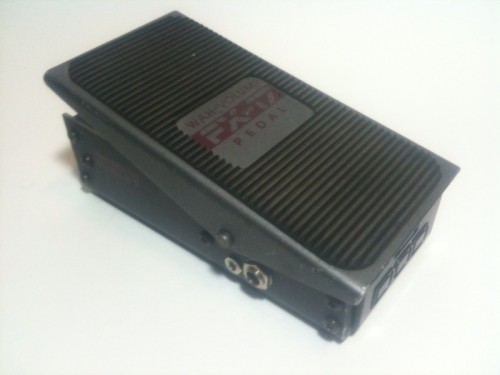
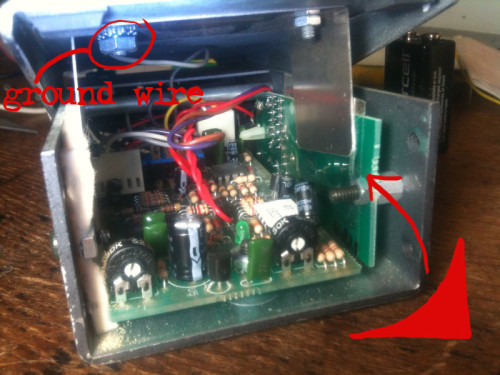
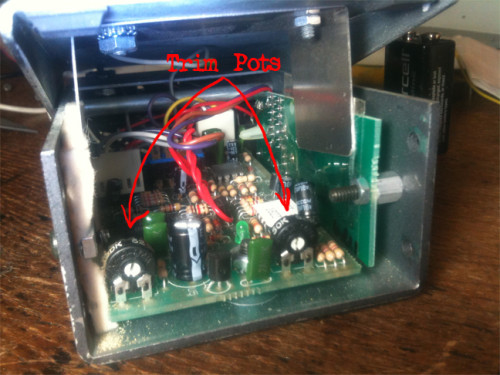
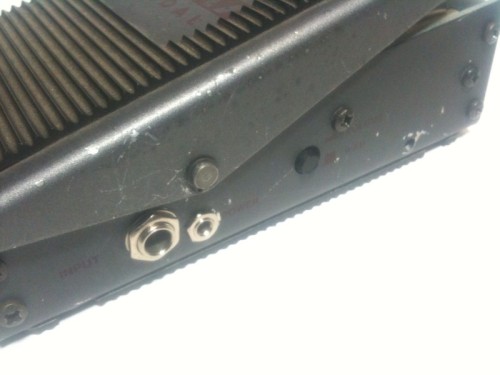
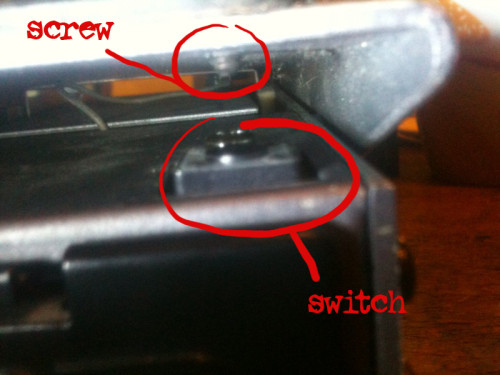
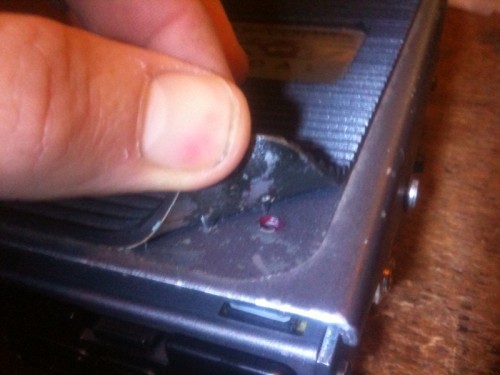
Ok, I'm not exactly a tech so you might have answered this already in your description. But is there a way I can lessen or narrow siren the range of the wah in this pedal? I'm a cover player and a lot of what I cover is Alice in Chains (I should have a JC95 Cantrell signature series crybaby, but I don't. I have a DOD FX17. It was a hand me down from my dad)
You're not going to have much luck with this pedal. My best guess would be that you could actually scrape away some of the copper on the variable capacitance plate that actuates the wah, but the results could vary wildly or destroy it beyond repair. My advice would be to pick up a standard Crybaby off craigslist for cheap ($40-60). You'll likely be happier with the smaller sweep.
From what i got by looking at the schematic, the first pot adjusts the max freq of the wah, while the other sets the range. So just try messing with them and see. 🙂